
To the exhibition of Hans Hollein at MAKo
"Form does not follow function. Form does not arise by itself. It is a significant decision of people."
On the occasion of the ceremonial opening of the comprehensive exhibition of Hans Hollein's work, a memorial symposium took place on Tuesday, June 24, 2014, at the Vienna University of Applied Arts, attended by leading figures from the Austrian architectural scene. The opening was led by the rector of Angewandte Gerald Bast and the director of MAK Christoph Thun-Hohenstein. The subsequent discussion was moderated by architecture historian Matthias Boeckl, who introduced a group of six guests offering diverse perspectives on the hard-to-categorize Hans Hollein. Among the most esteemed guests was Günther Feuerstein, whose theoretical texts on Austrian visionary architecture of the 60s and 70s were presented to the Czech audience fifteen years ago at the exhibition "Changing the World" at the GJF in Prague. Feuerstein mentioned, among other things, that the scientist, sociologist, and designer Hollein was a broadly talented figure who did not recognize boundaries and flowed through various disciplines with the same ease with which he was unafraid to combine noble materials with cheap substitutes. The only thing Hollein would fiercely resist is being strictly categorized as a postmodernist. Feuerstein and Hollein shared a close friendship that began in the early 60s during their collaboration on the magazine Der Bau, and rather than focusing on building realizations, they engaged in writing scripts, visionary dreaming, and organizing happenings.
Christoph Monschein was another of Hollein's close collaborators, originally a student of Hollein, who worked in his architectural office from the 70s. Monschein reminisced about their joint work with Walter Pichler after Hollein's return from the USA.
Swiss design theorist François Burkhardt currently works in Berlin, but in the past, he has taught at Milan Polytechnic and edited the prestigious magazine Domus. Burkhardt first met Hollein in person at a conference in the mid-70s, when Hollein was famous for his theoretical texts in which he liked to turn things on their head and shed new light on them. For Burkhardt, Hollein perfectly embodied the spirit of Vienna at that time, characterized by permanent change. By publishing texts in significant magazines, Hollein was able to immediately engage and clearly convey his views to the public. Unlike overly theoretical modernism, he was not so restrained and, in comparison to today’s era, he positioned himself as an alienated architectural superstar. Hollein, by crossing boundaries, sought to liberate the old way of perceiving architecture and to connect with artists and scientists from other fields. His idea that buildings do not necessarily have to be made of bricks but could simply be transported in a suitcase and inflated anywhere when needed was entirely revolutionary for its time. He was open to inspiration reaching deep into history and beyond the borders of the European continent, but he also showed equal interest in newly emerging media. The persona of the "universal artist" Hollein is evidenced by the fact that he was the curator of the Austrian pavilion both at the art (1972) and architectural (1996) biennales in Venice.
The image of Hollein as an academic was outlined by Viennese architect Franziska Ullmann, who was Hollein's assistant at Angewandte for ten years and now teaches at the University of Stuttgart after a residency at Harvard. According to her, Hollein was characterized by a strong desire for knowledge that was present in fundamental questions. With his students, he explored the boundaries of architecture to subsequently be able to transcend them. Another characteristic of his teaching approach, borrowed from Coop Himmelb(l)au, was "permanent enthusiasm." For him, the goal of education should not be to hand out grades, but to assist in finding the goals one wishes to fulfill in life.
The field of fashion and design in the discussion was represented by former model Katarine Noever, who opened a boutique “Etoile” in Vienna in the 60s and, with her husband Peter Noever, opened the legendary store Section-N in the early 70s, which was the first postwar design store in Vienna bringing fashion trends from Italy. Noever recalled how difficult the disputes were during their joint design process, where Hollein not only designed the facade and interior for the boutique but also the logo and wrapping paper. Noever also brought with her to the conference the legendary “Austriennale” glasses from the Austrian pavilion for the 14th Milan Triennale in 1968, in which she had been immortalized many times as a model.
The most personal perspective on Hollein the father was offered by Lilli Hollein, who is the long-time director of Vienna Design Week and one of the most respected Austrian journalists writing about design. Her brother Max Hollein is the director of the Städel Museum in Frankfurt, whose exhibition concept was created by Kuehn Malvezzi and who is behind both of Hollein's current exhibitions.
After the symposium, the participants moved to the neighboring MAK building for the opening of the exhibition simply titled “HOLLEIN.” In addition to a series of celebratory speeches, the most valuable words came from the exhibition curator Wilfried Kuehn from the Berlin studio Kuehn Malvezzi, which is responsible for the ongoing Hollein retrospective in Mönchengladbach.
The layout of the historical MAK building cannot be changed much; however, the Berlin curator managed to bring in two essential elements that were very close to Hollein: the central space was opened to a public square where visitors could meet in a different way than they are accustomed to in galleries, and in the second part, he attempted to faithfully transfer the spatial experience from the museum in Mönchengladbach, where the gallery rooms intertwine across corners. To experience the unique entry into the room from the corner, however, I recommend considering a trip to Germany to personally visit this most famous Hollein building.
The exhibition “HOLLEIN” at the MAK in Vienna will run until October 5, 2014, while the exhibition “Hans Hollein: Everything is Architecture” in Mönchengladbach, Germany, will end a week earlier on September 28, 2014.
"Everyone is an architect; everything is architecture."
More information >
Hans Hollein, 1963
On the occasion of the ceremonial opening of the comprehensive exhibition of Hans Hollein's work, a memorial symposium took place on Tuesday, June 24, 2014, at the Vienna University of Applied Arts, attended by leading figures from the Austrian architectural scene. The opening was led by the rector of Angewandte Gerald Bast and the director of MAK Christoph Thun-Hohenstein. The subsequent discussion was moderated by architecture historian Matthias Boeckl, who introduced a group of six guests offering diverse perspectives on the hard-to-categorize Hans Hollein. Among the most esteemed guests was Günther Feuerstein, whose theoretical texts on Austrian visionary architecture of the 60s and 70s were presented to the Czech audience fifteen years ago at the exhibition "Changing the World" at the GJF in Prague. Feuerstein mentioned, among other things, that the scientist, sociologist, and designer Hollein was a broadly talented figure who did not recognize boundaries and flowed through various disciplines with the same ease with which he was unafraid to combine noble materials with cheap substitutes. The only thing Hollein would fiercely resist is being strictly categorized as a postmodernist. Feuerstein and Hollein shared a close friendship that began in the early 60s during their collaboration on the magazine Der Bau, and rather than focusing on building realizations, they engaged in writing scripts, visionary dreaming, and organizing happenings.
Christoph Monschein was another of Hollein's close collaborators, originally a student of Hollein, who worked in his architectural office from the 70s. Monschein reminisced about their joint work with Walter Pichler after Hollein's return from the USA.
Swiss design theorist François Burkhardt currently works in Berlin, but in the past, he has taught at Milan Polytechnic and edited the prestigious magazine Domus. Burkhardt first met Hollein in person at a conference in the mid-70s, when Hollein was famous for his theoretical texts in which he liked to turn things on their head and shed new light on them. For Burkhardt, Hollein perfectly embodied the spirit of Vienna at that time, characterized by permanent change. By publishing texts in significant magazines, Hollein was able to immediately engage and clearly convey his views to the public. Unlike overly theoretical modernism, he was not so restrained and, in comparison to today’s era, he positioned himself as an alienated architectural superstar. Hollein, by crossing boundaries, sought to liberate the old way of perceiving architecture and to connect with artists and scientists from other fields. His idea that buildings do not necessarily have to be made of bricks but could simply be transported in a suitcase and inflated anywhere when needed was entirely revolutionary for its time. He was open to inspiration reaching deep into history and beyond the borders of the European continent, but he also showed equal interest in newly emerging media. The persona of the "universal artist" Hollein is evidenced by the fact that he was the curator of the Austrian pavilion both at the art (1972) and architectural (1996) biennales in Venice.
The image of Hollein as an academic was outlined by Viennese architect Franziska Ullmann, who was Hollein's assistant at Angewandte for ten years and now teaches at the University of Stuttgart after a residency at Harvard. According to her, Hollein was characterized by a strong desire for knowledge that was present in fundamental questions. With his students, he explored the boundaries of architecture to subsequently be able to transcend them. Another characteristic of his teaching approach, borrowed from Coop Himmelb(l)au, was "permanent enthusiasm." For him, the goal of education should not be to hand out grades, but to assist in finding the goals one wishes to fulfill in life.
The field of fashion and design in the discussion was represented by former model Katarine Noever, who opened a boutique “Etoile” in Vienna in the 60s and, with her husband Peter Noever, opened the legendary store Section-N in the early 70s, which was the first postwar design store in Vienna bringing fashion trends from Italy. Noever recalled how difficult the disputes were during their joint design process, where Hollein not only designed the facade and interior for the boutique but also the logo and wrapping paper. Noever also brought with her to the conference the legendary “Austriennale” glasses from the Austrian pavilion for the 14th Milan Triennale in 1968, in which she had been immortalized many times as a model.
The most personal perspective on Hollein the father was offered by Lilli Hollein, who is the long-time director of Vienna Design Week and one of the most respected Austrian journalists writing about design. Her brother Max Hollein is the director of the Städel Museum in Frankfurt, whose exhibition concept was created by Kuehn Malvezzi and who is behind both of Hollein's current exhibitions.
After the symposium, the participants moved to the neighboring MAK building for the opening of the exhibition simply titled “HOLLEIN.” In addition to a series of celebratory speeches, the most valuable words came from the exhibition curator Wilfried Kuehn from the Berlin studio Kuehn Malvezzi, which is responsible for the ongoing Hollein retrospective in Mönchengladbach.
The layout of the historical MAK building cannot be changed much; however, the Berlin curator managed to bring in two essential elements that were very close to Hollein: the central space was opened to a public square where visitors could meet in a different way than they are accustomed to in galleries, and in the second part, he attempted to faithfully transfer the spatial experience from the museum in Mönchengladbach, where the gallery rooms intertwine across corners. To experience the unique entry into the room from the corner, however, I recommend considering a trip to Germany to personally visit this most famous Hollein building.
The exhibition “HOLLEIN” at the MAK in Vienna will run until October 5, 2014, while the exhibition “Hans Hollein: Everything is Architecture” in Mönchengladbach, Germany, will end a week earlier on September 28, 2014.
"Everyone is an architect; everything is architecture."
Hans Hollein, 1968
More information >
The English translation is powered by AI tool. Switch to Czech to view the original text source.
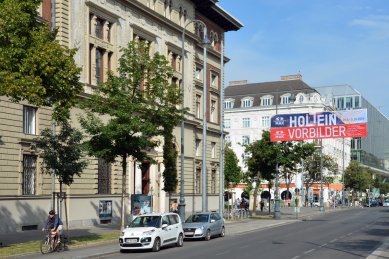
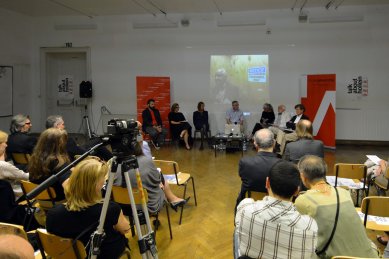
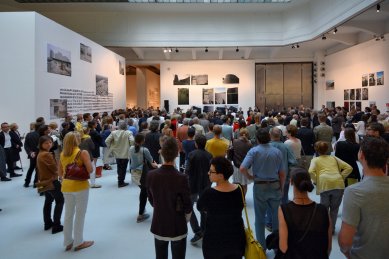
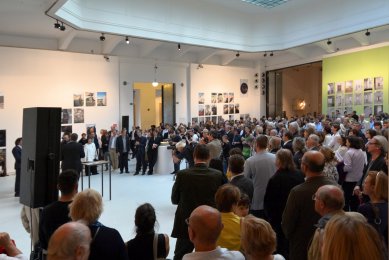
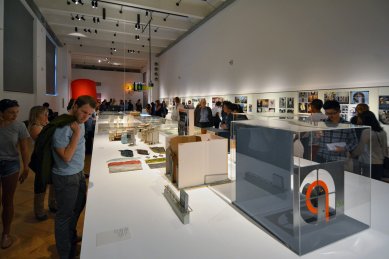
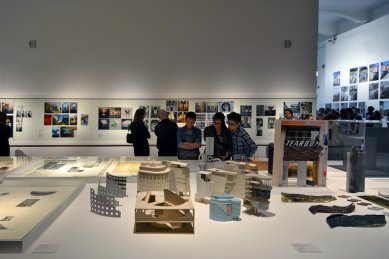
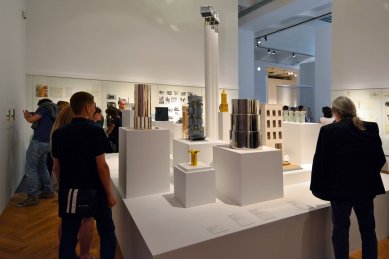
0 comments
add comment











